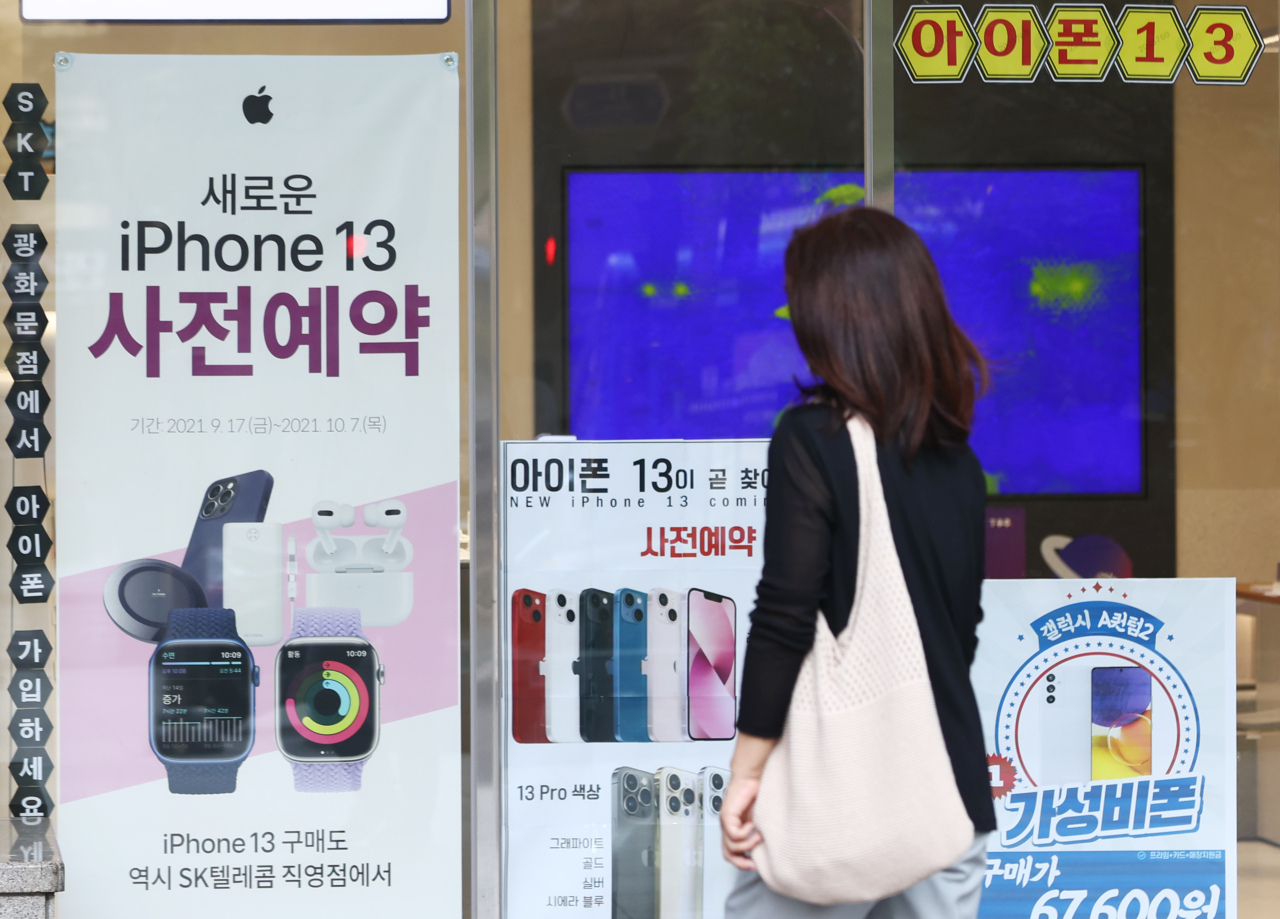 |
(Yonhap) |
Despite recent releases from Samsung Electronics and Apple featuring the most advanced technologies so far, the global smartphone market is forecast to grow slowly as phone vendors struggle to secure components, including semiconductors, amid ongoing shortages worldwide.
According to a recent report from market researcher Counterpoint Research, the total shipment volume of smartphones for 2021 is expected to grow 6 percent to 1.41 billion units.
The growth forecast was lowered from the researcher’s previous estimate of 9 percent as some phone manufacturers are reporting shortages of key components, the institution said.
“Some smartphone OEMs and vendors are reporting they had only received 80 percent of their requested volumes on key components during the second quarter of 2021, and the situation seems to be getting worse as we move through the third quarter,” the report said. “Some smartphone makers are now saying they are only receiving 70 percent of their requests, creating multiple problems.”
Counterpoint Research believes as much as 90 percent of the smartphone industry is hit by the shortage. If so, this would impact shipment volume in the second half of the year.
“The semiconductor shortage seems to affect all brands in the ecosystems,” said Tom Kang, a research director at Counterpoint Research. “Samsung, Oppo, Xiaomi have all been affected and we are lowering our forecasts. But Apple seems to be the most resilient and least affected by the AP shortage situation.”
The latest phones from Samsung and Apple, the Galaxy Z Flip 3 and the iPhone13, have become scarce, with consumers waiting more than a month to get the new devices in their hands.
Apple Korea told customers who made reservations for iPhone 13 devices last week that their products would be delivered in November.
The new iPhone 13 edition was available for sale Oct. 1 at midnight, but the initial inventory ran out in a few minutes.
Smartphone vendors had experienced shortages of multiple components since the fourth quarter of 2020, including display driver ICs, power management ICs, application processors and camera sensors.
Due to the protracted COVID-19 pandemic, the production of multilayer ceramic capacitors, essential parts in electronics, was affected in Malaysia last month too.
In the case of application processors, among the most crucial elements in smartphones, the shortage was triggered by low yield rates in newly established fab lines, according to the report.
“With the situation seeming to persist it caused a chain reaction throughout the industry,” it said. “AP vendors like Qualcomm and Mediatek rely on these foundries and manufacturing problems result in fewer processors supplied, which in turn affects smartphone OEMs.”
The shortages of smartphone components may lead to hikes in prices, too.
A report from Strategy Analytics showed that smartphones’ wholesale prices would increase by 11 percent from $279 last year to $310 this year.
By Song Su-hyun (
song@heraldcorp.com)








![[Herald Interview] How Gopizza got big in India](http://res.heraldm.com/phpwas/restmb_idxmake.php?idx=644&simg=/content/image/2024/11/20/20241120050057_0.jpg)